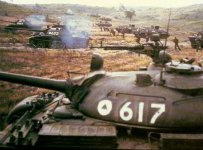- Reaction score
- 35
- Points
- 560
If we are thinking of larger, heavier vehicles (but not too large and heavy) I would put in a word for the USMC's ACV. At @ 30,000 kg it is comparable to the LAV 6.0, but offers the ability to conduct amphibious operations, which is a capability we do not currently possess. The ability to cross rivers, lakes and other water obstacles would seem to be a no brainer (certainly one of the hard won lessons of the Netherlands campaign, and a major weakness during the Cold War, when we would have had to cross a landscape cut with innumerable rivers and canals....).
Why not ask for capabilities that would provide more flexibility and options? The firepower is more comparable to an APC (currently .50 HMG/40mm Grenade launcher), but no doubt a stabilized RWS will eventually be offered. There is no guarantee that we won't be facing water obstacles in some future operation (regardless of where it is or what intensity the operation is at). On a positive note, the hull is large and roomy enough to support innumerable variants if desired, and assuming anyone were to seriously consider this option, we could actually get a buy in with the USMC, get a long production run and have considerable economy of scale savings as well.
Why not ask for capabilities that would provide more flexibility and options? The firepower is more comparable to an APC (currently .50 HMG/40mm Grenade launcher), but no doubt a stabilized RWS will eventually be offered. There is no guarantee that we won't be facing water obstacles in some future operation (regardless of where it is or what intensity the operation is at). On a positive note, the hull is large and roomy enough to support innumerable variants if desired, and assuming anyone were to seriously consider this option, we could actually get a buy in with the USMC, get a long production run and have considerable economy of scale savings as well.





